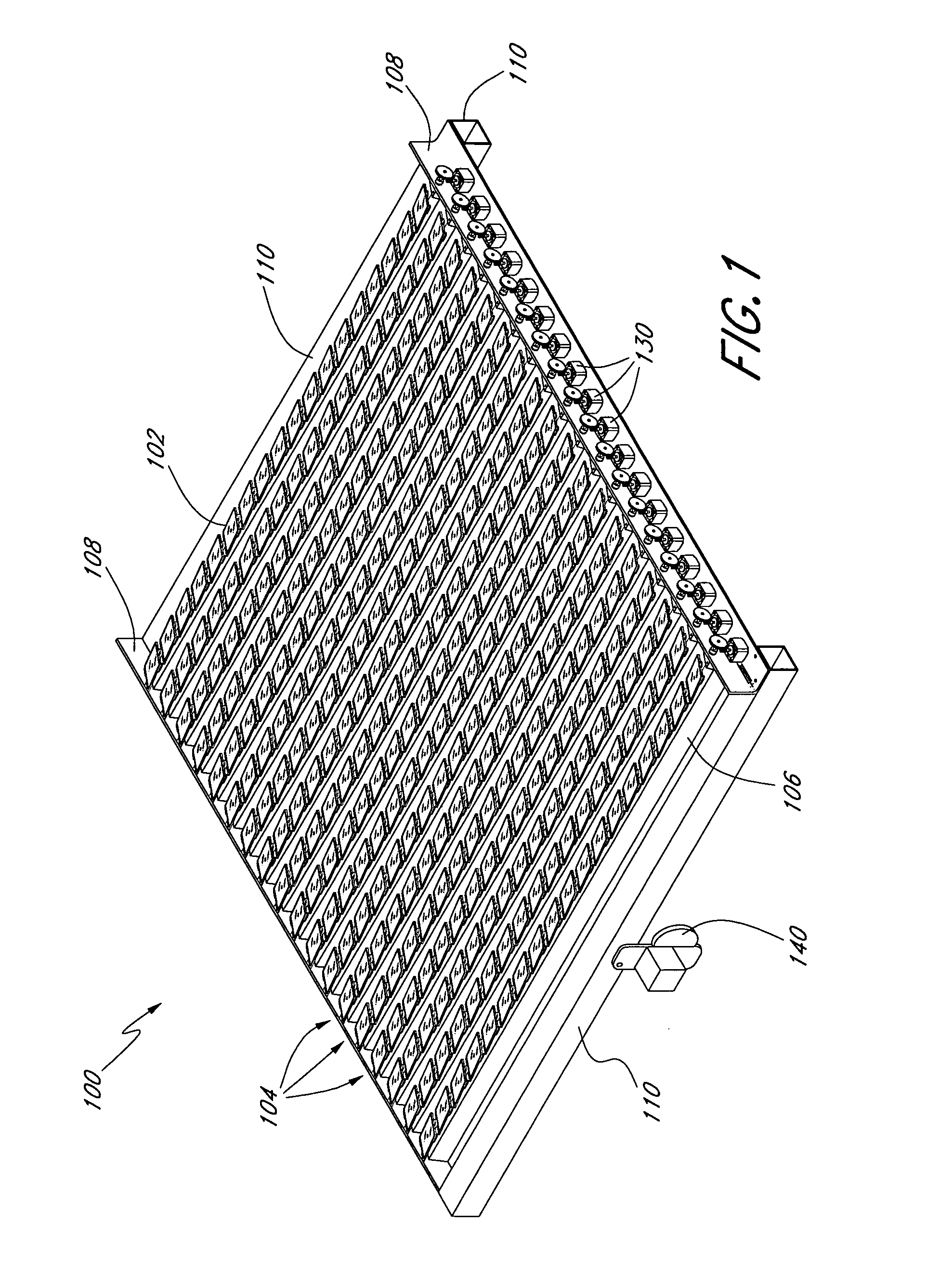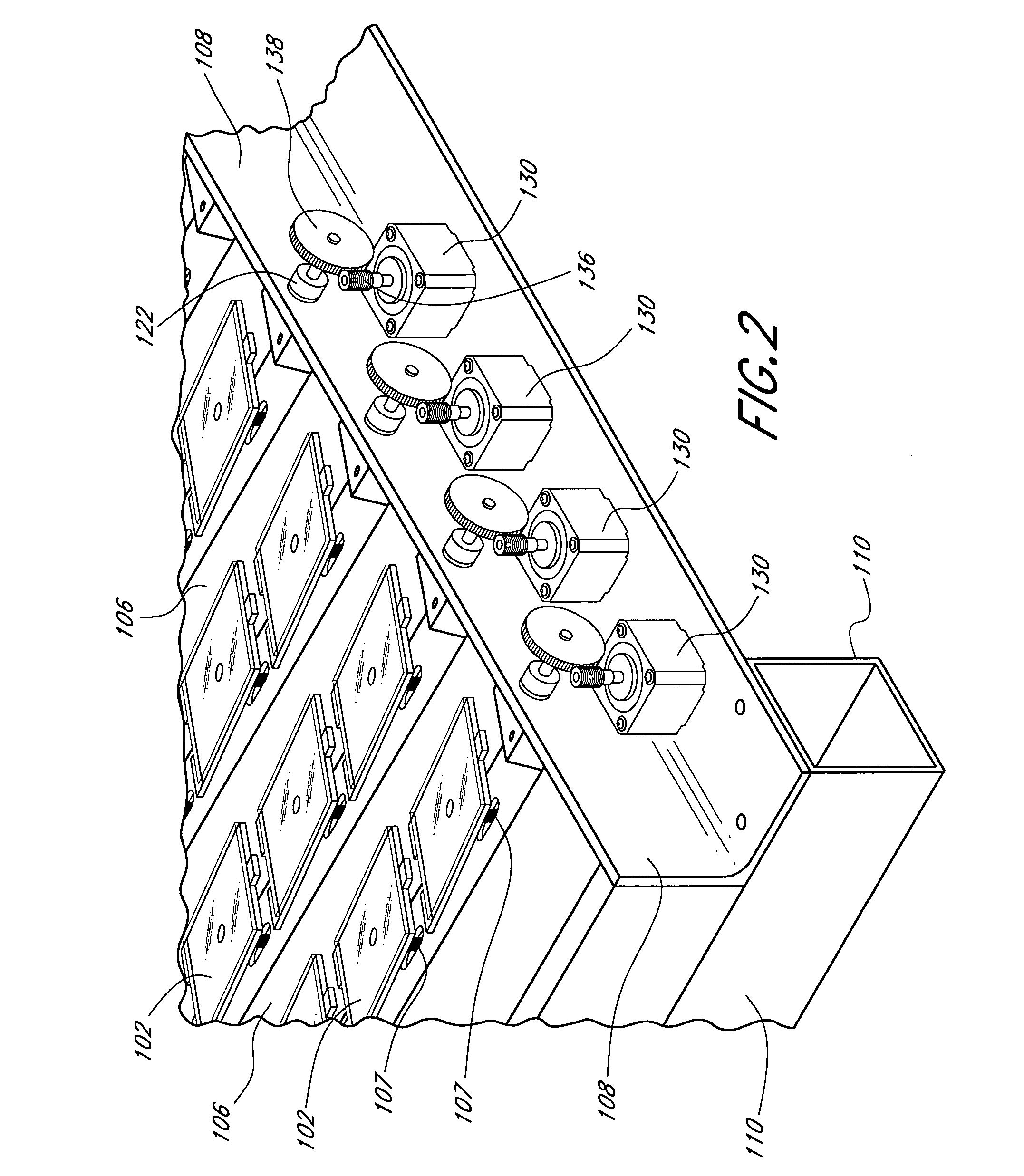Solar concentrator array with grouped adjustable elements
a solar concentrator and array technology, applied in the field of solar concentrator arrays, can solve the problems of arrays that are relatively heavy, arrays that are undesired, and require a large amount of motorized equipment, so as to reduce the number of motors required for the entire tracking heliostat array, reduce the cost, complexity and weight of the array
- Summary
- Abstract
- Description
- Claims
- Application Information
AI Technical Summary
Benefits of technology
Problems solved by technology
Method used
Image
Examples
Embodiment Construction
[0028]As described herein, an improved tracking heliostat or solar concentrator array having adjustable optical elements has been developed. By using one or more motors to adjust the orientation of group of optical elements, fewer overall motors are required as compared to a conventional array having dedicated motors associated with each optical element. Additionally, the motors used to adjust the orientation of optical elements often require environmental protection, and therefore conventional tracking heliostat arrays having motors associated with each optical element often are placed within a protective enclosure. This can adversely affect the solar concentrator by reducing the amount of solar energy that is reflected from the optical elements, and by increasing the weight and cost of the array.
[0029]Therefore, by using one or more motors to adjust the orientation of more than one optical element, several advantages can optionally be obtained. For example, the improved tracking h...
PUM
 Login to View More
Login to View More Abstract
Description
Claims
Application Information
 Login to View More
Login to View More - R&D
- Intellectual Property
- Life Sciences
- Materials
- Tech Scout
- Unparalleled Data Quality
- Higher Quality Content
- 60% Fewer Hallucinations
Browse by: Latest US Patents, China's latest patents, Technical Efficacy Thesaurus, Application Domain, Technology Topic, Popular Technical Reports.
© 2025 PatSnap. All rights reserved.Legal|Privacy policy|Modern Slavery Act Transparency Statement|Sitemap|About US| Contact US: help@patsnap.com



